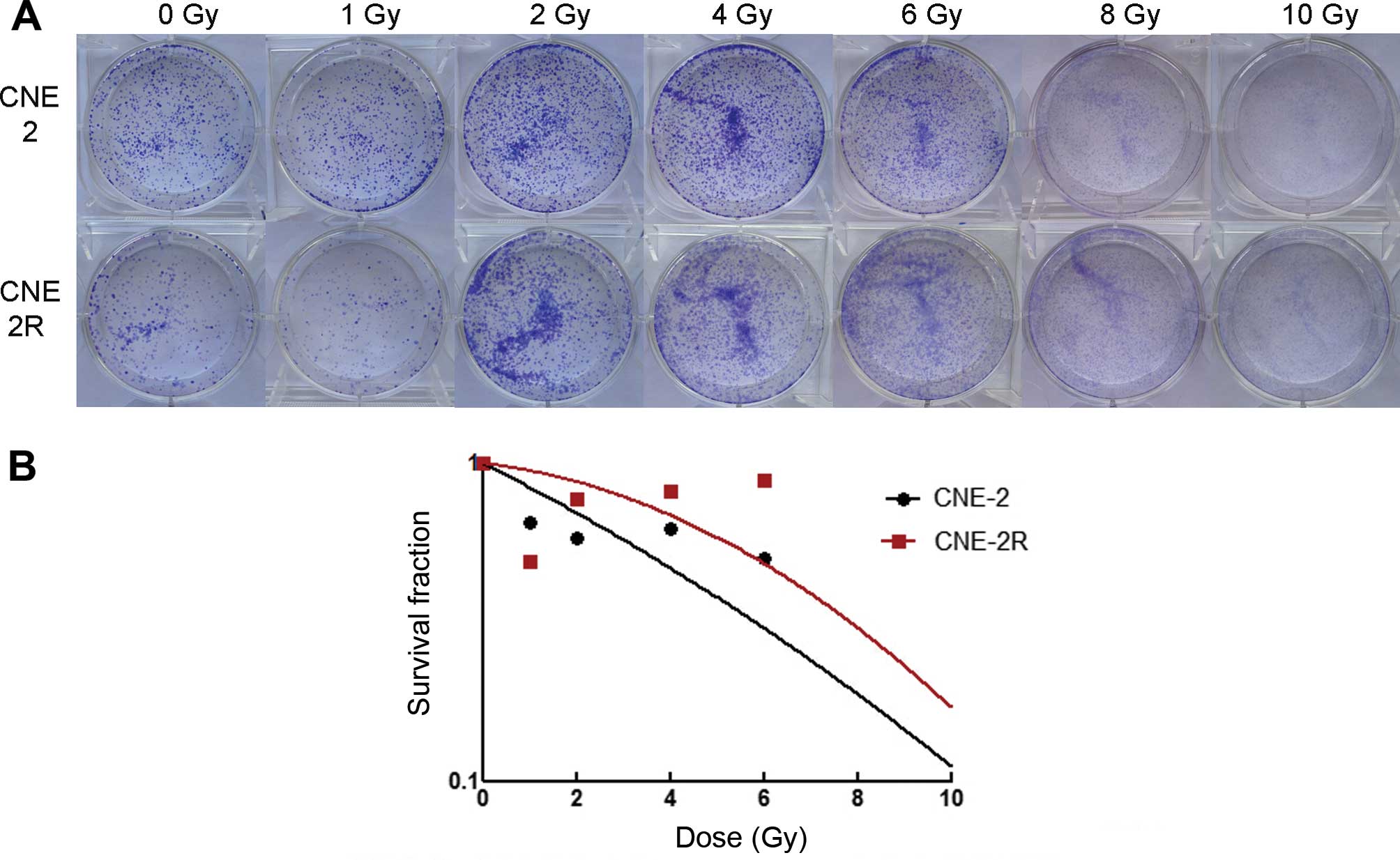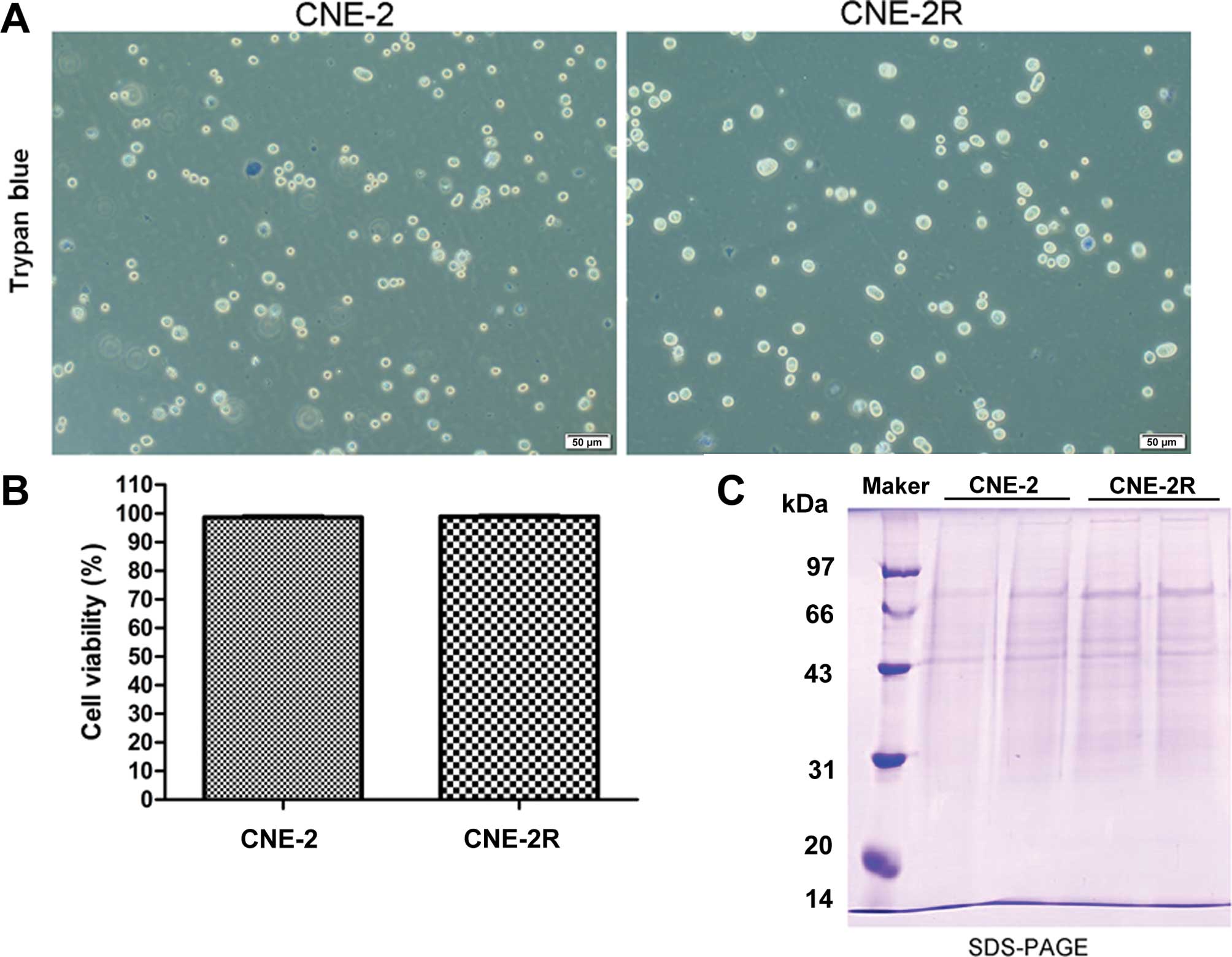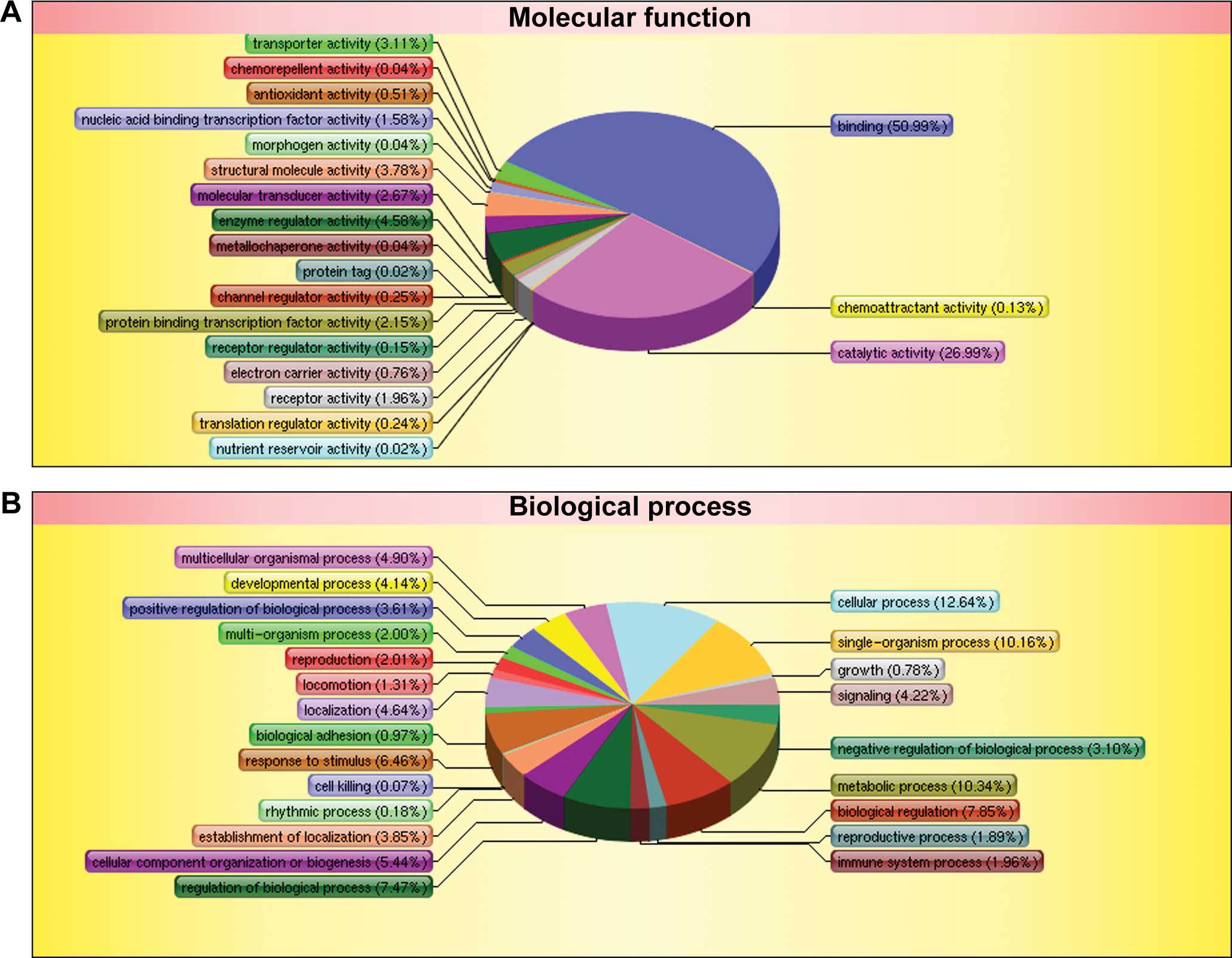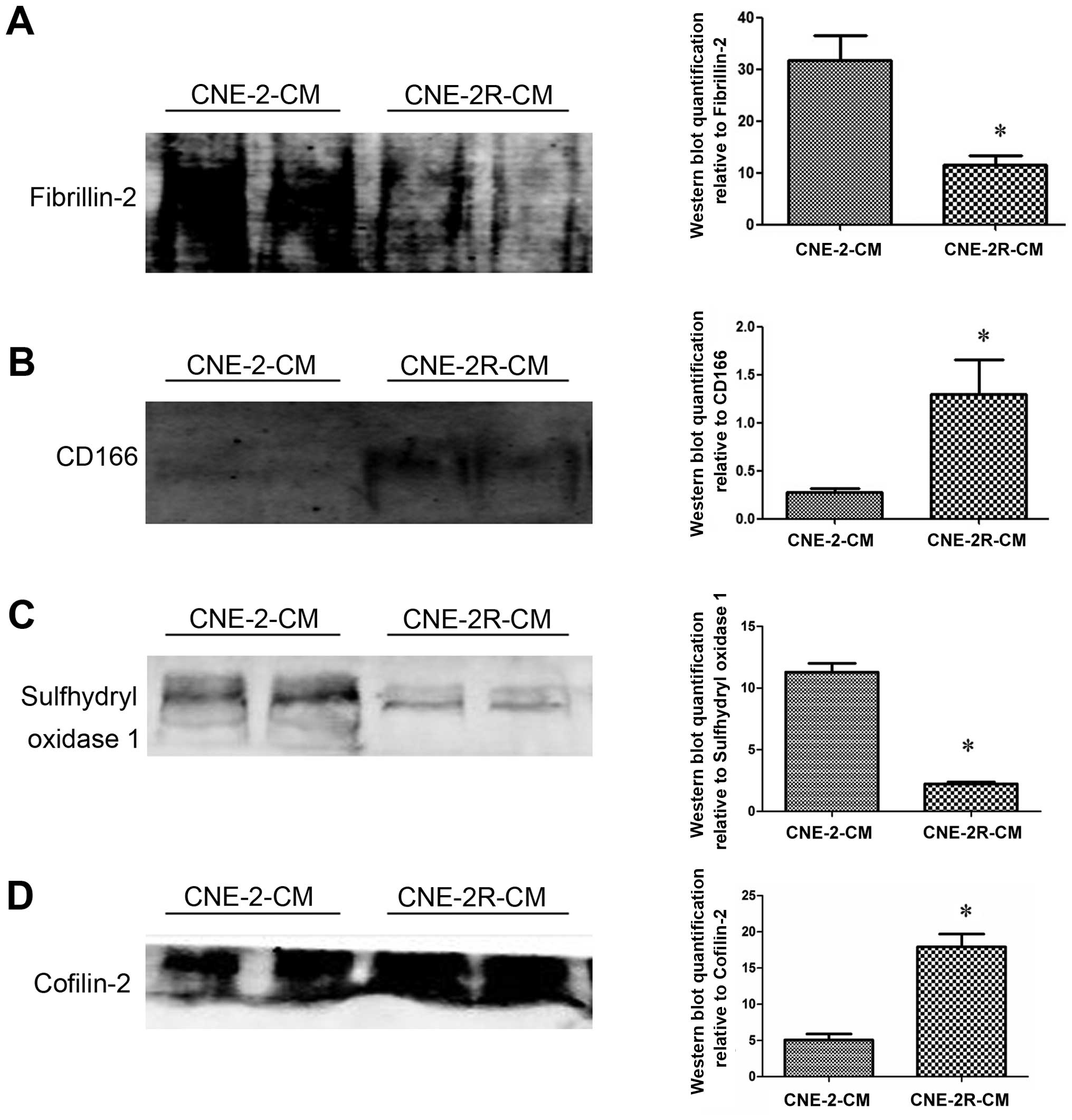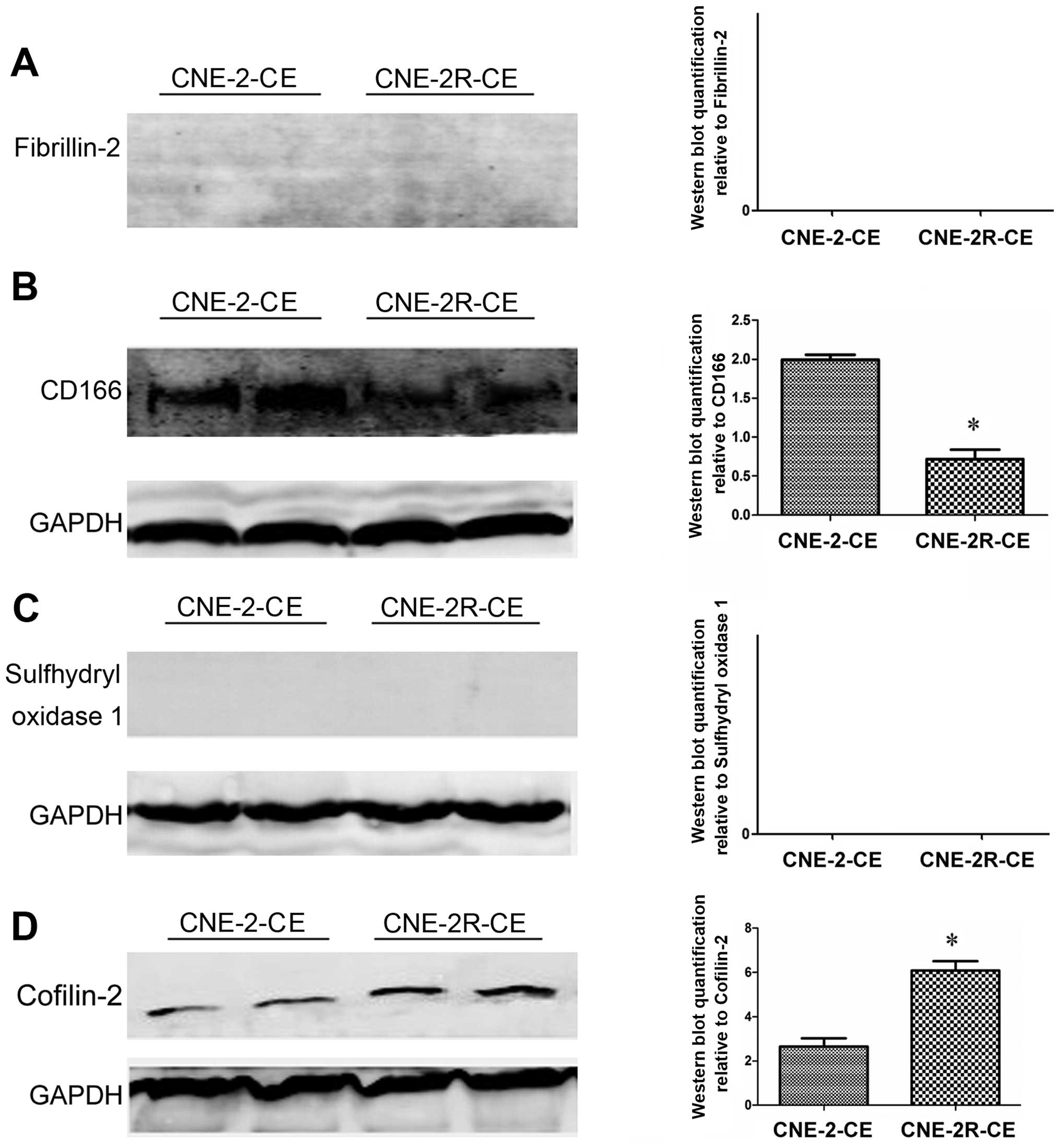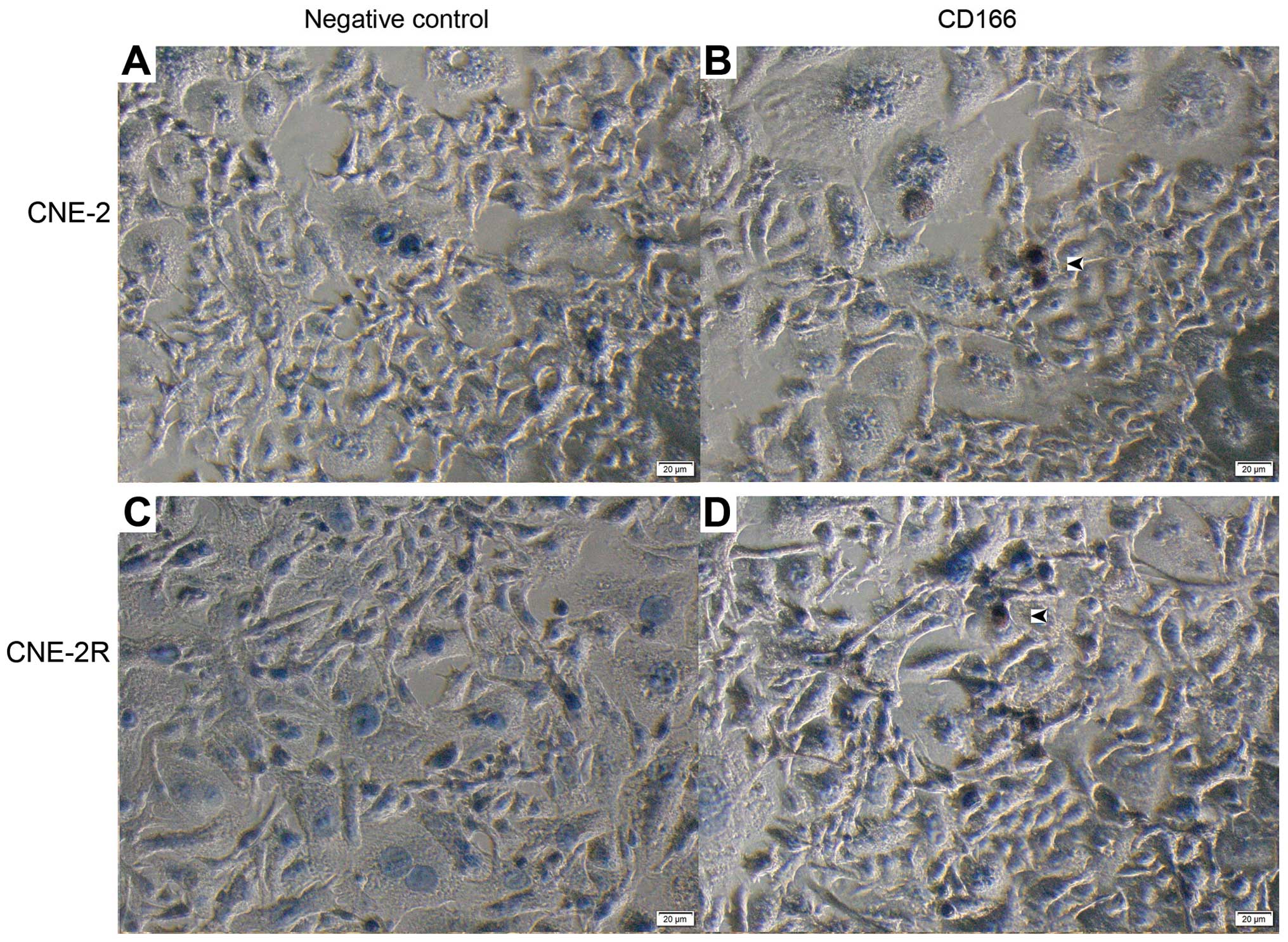|
1
|
He ML, Luo MX, Lin MC and Kung HF:
MicroRNAs: Potential diagnostic markers and therapeutic targets for
EBV-associated nasopharyngeal carcinoma. Biochim Biophys Acta.
1825:1–10. 2012.
|
|
2
|
Lo KW, To KF and Huang DP: Focus on
nasopharyngeal carcinoma. Cancer Cell. 5:423–428. 2004. View Article : Google Scholar : PubMed/NCBI
|
|
3
|
Chia WK, Teo M, Wang WW, Lee B, Ang SF,
Tai WM, Chee CL, Ng J, Kan R, Lim WT, et al: Adoptive T-cell
transfer and chemotherapy in the first-line treatment of metastatic
and/or locally recurrent nasopharyngeal carcinoma. Mol Ther.
22:132–139. 2014. View Article : Google Scholar :
|
|
4
|
Wu J, Tang Q, Zhao S, Zheng F, Wu Y, Tang
G and Hahn SS: Extracellular signal-regulated kinase
signaling-mediated induction and interaction of FOXO3a and p53
contribute to the inhibition of nasopharyngeal carcinoma cell
growth by curcumin. Int J Oncol. 45:95–103. 2014.PubMed/NCBI
|
|
5
|
Suárez C, Rodrigo JP, Rinaldo A,
Langendijk JA, Shaha AR and Ferlito A: Current treatment options
for recurrent nasopharyngeal cancer. Eur Arch Otorhinolaryngol.
267:1811–1824. 2010. View Article : Google Scholar : PubMed/NCBI
|
|
6
|
Lee AW, Ng WT, Chan LL, Hung WM, Chan CC,
Sze HC, Chan OS, Chang AT and Yeung RM: Evolution of treatment for
nasopharyngeal cancer - success and setback in the
intensity-modulated radiotherapy era. Radiother Oncol. 110:377–384.
2014. View Article : Google Scholar : PubMed/NCBI
|
|
7
|
Good DM, Thongboonkerd V, Novak J,
Bascands JL, Schanstra JP, Coon JJ, Dominiczak A and Mischak H:
Body fluid proteomics for biomarker discovery: Lessons from the
past hold the key to success in the future. J Proteome Res.
6:4549–4555. 2007. View Article : Google Scholar : PubMed/NCBI
|
|
8
|
Schmidt A and Aebersold R: High-accuracy
proteome maps of human body fluids. Genome Biol. 7:2422006.
View Article : Google Scholar : PubMed/NCBI
|
|
9
|
Reymond MA and Schlegel W: Proteomics in
cancer. Adv Clin Chem. 44:103–142. 2007. View Article : Google Scholar : PubMed/NCBI
|
|
10
|
Hanash SM, Pitteri SJ and Faca VM: Mining
the plasma proteome for cancer biomarkers. Nature. 452:571–579.
2008. View Article : Google Scholar : PubMed/NCBI
|
|
11
|
Juan HF, Chen JH, Hsu WT, Huang SC, Chen
ST, Yi-Chung Lin J, Chang YW, Chiang CY, Wen LL, Chan DC, et al:
Identification of tumor-associated plasma biomarkers using
proteomic techniques: From mouse to human. Proteomics. 4:2766–2775.
2004. View Article : Google Scholar : PubMed/NCBI
|
|
12
|
Wu CC, Chien KY, Tsang NM, Chang KP, Hao
SP, Tsao CH, Chang YS and Yu JS: Cancer cell-secreted proteomes as
a basis for searching potential tumor markers: Nasopharyngeal
carcinoma as a model. Proteomics. 5:3173–3182. 2005. View Article : Google Scholar : PubMed/NCBI
|
|
13
|
Wu CC, Peng PH, Chang YT, Huang YS, Chang
KP, Hao SP, Tsang NM, Yeh CT, Chang YS and Yu JS: Identification of
potential serum markers for nasopharyngeal carcinoma from a
xenografted mouse model using Cy-dye labeling combined with
three-dimensional fractionation. Proteomics. 8:3605–3620. 2008.
View Article : Google Scholar : PubMed/NCBI
|
|
14
|
Chang KP, Wu CC, Chen HC, Chen SJ, Peng
PH, Tsang NM, Lee LY, Liu SC, Liang Y, Lee YS, et al:
Identification of candidate nasopharyngeal carcinoma serum
biomarkers by cancer cell secretome and tissue transcriptome
analysis: Potential usage of cystatin A for predicting nodal stage
and poor prognosis. Proteomics. 10:2644–2660. 2010. View Article : Google Scholar : PubMed/NCBI
|
|
15
|
Tang S, Huang W, Zhong M, Yin L, Jiang H,
Hou S, Gan P and Yuan Y: Identification Keratin 1 as a
cDDP-resistant protein in nasopharyngeal carcinoma cell lines. J
Proteomics. 75:2352–2360. 2012. View Article : Google Scholar : PubMed/NCBI
|
|
16
|
Gu SY, Tang WP, Zeng Y, et al: An
epithelial cell line established from poorly differentiated
nasopharyngeal carcinoma. Ai Zheng. 2:70–72. 1983.In Chinese.
|
|
17
|
Li GP, Wang H, Lai YK, Chen SC, Lin MC, Lu
G, Zhang JF, He XG, Qian CN and Kung HF: Proteomic profiling
between CNE-2 and its strongly metastatic subclone S-18 and
functional characterization of HSP27 in metastasis of
nasopharyngeal carcinoma. Proteomics. 11:2911–2920. 2011.
View Article : Google Scholar : PubMed/NCBI
|
|
18
|
Guo Y, Zhu XD, Qu S, Li L, Su F, Li Y,
Huang ST and Li DR: Identification of genes involved in
radioresistance of nasopharyngeal carcinoma by integrating gene
ontology and protein-protein interaction networks. Int J Oncol.
40:85–92. 2012.
|
|
19
|
Petriz BA, Gomes CP, Rocha LA, Rezende TM
and Franco OL: Proteomics applied to exercise physiology: A
cutting-edge technology. J Cell Physiol. 227:885–898. 2012.
View Article : Google Scholar
|
|
20
|
Jayapal KP, Sui S, Philp RJ, Kok YJ, Yap
MG, Griffin TJ and Hu WS: Multitagging proteomic strategy to
estimate protein turnover rates in dynamic systems. J Proteome Res.
9:2087–2097. 2010. View Article : Google Scholar : PubMed/NCBI
|
|
21
|
Zhou ZR, Zhu XD, Zhao W, Qu S, Su F, Huang
ST, Ma JL and Li XY: Poly(ADP-ribose) polymerase-1 regulates the
mechanism of irradiation-induced CNE-2 human nasopharyngeal
carcinoma cell autophagy and inhibition of autophagy contributes to
the radiation sensitization of CNE-2 cells. Oncol Rep.
29:2498–2506. 2013.PubMed/NCBI
|
|
22
|
Tang CE, Guan YJ, Yi B, Li XH, Liang K,
Zou HY, Yi H, Li MY, Zhang PF, Li C, et al: Identification of the
amyloid β-protein precursor and cystatin C as novel epidermal
growth factor receptor regulated secretory proteins in
nasopharyngeal carcinoma by proteomics. J Proteome Res.
9:6101–6111. 2010. View Article : Google Scholar : PubMed/NCBI
|
|
23
|
Li S, Li X, Wang Y, Yang J, Chen Z and
Shan S: Global secretome characterization of A549 human alveolar
epithelial carcinoma cells during Mycoplasma pneumoniae infection.
BMC Microbiol. 14:272014. View Article : Google Scholar : PubMed/NCBI
|
|
24
|
Lyu SY, Rhim JY and Park WB: Antiherpetic
activities of flavonoids against herpes simplex virus type 1
(HSV-1) and type 2 (HSV-2) in vitro. Arch Pharm Res. 28:1293–1301.
2005. View Article : Google Scholar : PubMed/NCBI
|
|
25
|
van den Aardweg GJ, Kiliç E, de Klein A
and Luyten GP: Dose fractionation effects in primary and metastatic
human uveal melanoma cell lines. Invest Ophthalmol Vis Sci.
44:4660–4664. 2003. View Article : Google Scholar : PubMed/NCBI
|
|
26
|
Bendtsen JD, Nielsen H, von Heijne G and
Brunak S: Improved prediction of signal peptides: SignalP 3.0. J
Mol Biol. 340:783–795. 2004. View Article : Google Scholar : PubMed/NCBI
|
|
27
|
Loei H, Tan HT, Lim TK, Lim KH, So JB,
Yeoh KG and Chung MC: Mining the gastric cancer secretome:
Identification of GRN as a potential diagnostic marker for early
gastric cancer. J Proteome Res. 11:1759–1772. 2012. View Article : Google Scholar
|
|
28
|
Bendtsen JD, Jensen LJ, Blom N, Von Heijne
G and Brunak S: Feature-based prediction of non-classical and
leaderless protein secretion. Protein Eng Des Sel. 17:349–356.
2004. View Article : Google Scholar : PubMed/NCBI
|
|
29
|
Nickel W: The mystery of nonclassical
protein secretion. A current view on cargo proteins and potential
export routes. Eur J Biochem. 270:2109–2119. 2003. View Article : Google Scholar : PubMed/NCBI
|
|
30
|
Mathivanan S and Simpson RJ: ExoCarta: A
compendium of exosomal proteins and RNA. Proteomics. 9:4997–5000.
2009. View Article : Google Scholar : PubMed/NCBI
|
|
31
|
Luftig M: Heavy LIFting: Tumor promotion
and radioresistance in NPC. J Clin Invest. 123:4999–5001. 2013.
View Article : Google Scholar : PubMed/NCBI
|
|
32
|
Ritty TM, Broekelmann TJ, Werneck CC and
Mecham RP: Fibrillin-1 and -2 contain heparin-binding sites
important for matrix deposition and that support cell attachment.
Biochem J. 375:425–432. 2003. View Article : Google Scholar : PubMed/NCBI
|
|
33
|
Grass B, Wachtel M, Behnke S, Leuschner I,
Niggli FK and Schäfer BW: Immunohistochemical detection of EGFR,
fibrillin-2, P-cadherin and AP2beta as biomarkers for
rhabdomyosarcoma diagnostics. Histopathology. 54:873–879. 2009.
View Article : Google Scholar : PubMed/NCBI
|
|
34
|
Chandramouli A, Simundza J, Pinderhughes A
and Cowin P: Choreographing metastasis to the tune of LTBP. J
Mammary Gland Biol Neoplasia. 16:67–80. 2011. View Article : Google Scholar : PubMed/NCBI
|
|
35
|
Kim KW, Moretti L, Mitchell LR, Jung DK
and Lu B: Endoplasmic reticulum stress mediates radiation-induced
autophagy by perk-eIF2alpha in caspase-3/7-deficient cells.
Oncogene. 29:3241–3251. 2010. View Article : Google Scholar : PubMed/NCBI
|
|
36
|
Fels DR, Ye J, Segan AT, Kridel SJ,
Spiotto M, Olson M, Koong AC and Koumenis C: Preferential
cytotoxicity of bortezomib toward hypoxic tumor cells via
overactivation of endoplasmic reticulum stress pathways. Cancer
Res. 68:9323–9330. 2008. View Article : Google Scholar : PubMed/NCBI
|
|
37
|
Rainger J, Keighren M, Keene DR,
Charbonneau NL, Rainger JK, Fisher M, Mella S, Huang JT, Rose L,
van't Hof R, et al: A trans acting protein effect causes severe eye
malformation in the Mp mouse. PLoS Genet. 9:e10039982013.
View Article : Google Scholar
|
|
38
|
Thorpe C, Hoober KL, Raje S, Glynn NM,
Burnside J, Turi GK and Coppock DL: Sulfhydryl oxidases: Emerging
catalysts of protein disulfide bond formation in eukaryotes. Arch
Biochem Biophys. 405:1–12. 2002. View Article : Google Scholar : PubMed/NCBI
|
|
39
|
Chakravarthi S, Jessop CE, Willer M,
Stirling CJ and Bulleid NJ: Intracellular catalysis of disulfide
bond formation by the human sulfhydryl oxidase, QSOX1. Biochem J.
404:403–411. 2007. View Article : Google Scholar : PubMed/NCBI
|
|
40
|
Pernodet N, Hermetet F, Adami P, Vejux A,
Descotes F, Borg C, Adams M, Pallandre JR, Viennet G, Esnard F, et
al: High expression of QSOX1 reduces tumorogenesis, and is
associated with a better outcome for breast cancer patients. Breast
Cancer Res. 14:R1362012. View Article : Google Scholar : PubMed/NCBI
|
|
41
|
Yamaguchi H and Condeelis J: Regulation of
the actin cytoskeleton in cancer cell migration and invasion.
Biochim Biophys Acta. 1773:642–652. 2007. View Article : Google Scholar
|
|
42
|
Delorme V, Machacek M, DerMardirossian C,
Anderson KL, Wittmann T, Hanein D, Waterman-Storer C, Danuser G and
Bokoch GM: Cofilin activity downstream of Pak1 regulates cell
protrusion efficiency by organizing lamellipodium and lamella actin
networks. Dev Cell. 13:646–662. 2007. View Article : Google Scholar : PubMed/NCBI
|
|
43
|
Wang Y, Kuramitsu Y, Ueno T, Suzuki N,
Yoshino S, Iizuka N, Zhang X, Oka M and Nakamura K: Differential
expression of up-regulated cofilin-1 and down-regulated cofilin-2
characteristic of pancreatic cancer tissues. Oncol Rep.
26:1595–1599. 2011.PubMed/NCBI
|
|
44
|
Kuramitsu Y, Wang Y, Okada F, Baron B,
Tokuda K, Kitagawa T, Akada J and Nakamura K: Malignant progressive
tumor cell clone exhibits significant up-regulation of cofilin-2
and 27-kDa modified form of cofilin-1 compared to regressive clone.
Anticancer Res. 33:3661–3665. 2013.PubMed/NCBI
|
|
45
|
Le AP, Huang Y, Pingle SC, Kesari S, Wang
H, Yong RL, Zou H and Friedel RH: Plexin-B2 promotes invasive
growth of malignant glioma. Oncotarget. 6:7293–7304. 2015.
View Article : Google Scholar : PubMed/NCBI
|
|
46
|
Jia P, Liu Y and Zhao Z: Integrative
pathway analysis of genome-wide association studies and gene
expression data in prostate cancer. BMC Syst Biol. 6(Suppl 3):
S132012. View Article : Google Scholar :
|
|
47
|
Codogno P: Autophagy in cell survival and
death. J Soc Biol. 199:233–241. 2005.In French. View Article : Google Scholar
|
|
48
|
Oswald J, Boxberger S, Jørgensen B,
Feldmann S, Ehninger G, Bornhäuser M and Werner C: Mesenchymal stem
cells can be differentiated into endothelial cells in vitro. Stem
Cells. 22:377–384. 2004. View Article : Google Scholar : PubMed/NCBI
|
|
49
|
Foster LJ, Zeemann PA, Li C, Mann M,
Jensen ON and Kassem M: Differential expression profiling of
membrane proteins by quantitative proteomics in a human mesenchymal
stem cell line undergoing osteoblast differentiation. Stem Cells.
23:1367–1377. 2005. View Article : Google Scholar : PubMed/NCBI
|
|
50
|
Behnan J, Isakson P, Joel M, Cilio C,
Langmoen IA, Vik-Mo EO and Badn W: Recruited brain tumor-derived
mesenchymal stem cells contribute to brain tumor progression. Stem
Cells. 32:1110–1123. 2014. View Article : Google Scholar
|
|
51
|
Burns JS, Abdallah BM, Guldberg P, Rygaard
J, Schrøder HD and Kassem M: Tumorigenic heterogeneity in cancer
stem cells evolved from long-term cultures of
telomerase-immortalized human mesenchymal stem cells. Cancer Res.
65:3126–3135. 2005.PubMed/NCBI
|
|
52
|
Dalerba P, Dylla SJ, Park IK, Liu R, Wang
X, Cho RW, Hoey T, Gurney A, Huang EH, Simeone DM, et al:
Phenotypic characterization of human colorectal cancer stem cells.
Proc Natl Acad Sci USA. 104:10158–10163. 2007. View Article : Google Scholar : PubMed/NCBI
|
|
53
|
Moon BS, Jeong WJ, Park J, Kim TI, Min S
and Choi KY: Role of oncogenic K-Ras in cancer stem cell activation
by aberrant Wnt/β-catenin signaling. J Natl Cancer Inst.
106:djt3732014. View Article : Google Scholar
|
|
54
|
Yan M, Yang X, Wang L, Clark D, Zuo H, Ye
D, Chen W and Zhang P: Plasma membrane proteomics of tumor spheres
identify CD166 as a novel marker for cancer stem-like cells in head
and neck squamous cell carcinoma. Mol Cell Proteomics.
12:3271–3284. 2013. View Article : Google Scholar : PubMed/NCBI
|
|
55
|
Nowell PC: The clonal evolution of tumor
cell populations. Science. 194:23–28. 1976. View Article : Google Scholar : PubMed/NCBI
|
|
56
|
Reya T, Morrison SJ, Clarke MF and
Weissman IL: Stem cells, cancer, and cancer stem cells. Nature.
414:105–111. 2001. View Article : Google Scholar : PubMed/NCBI
|















